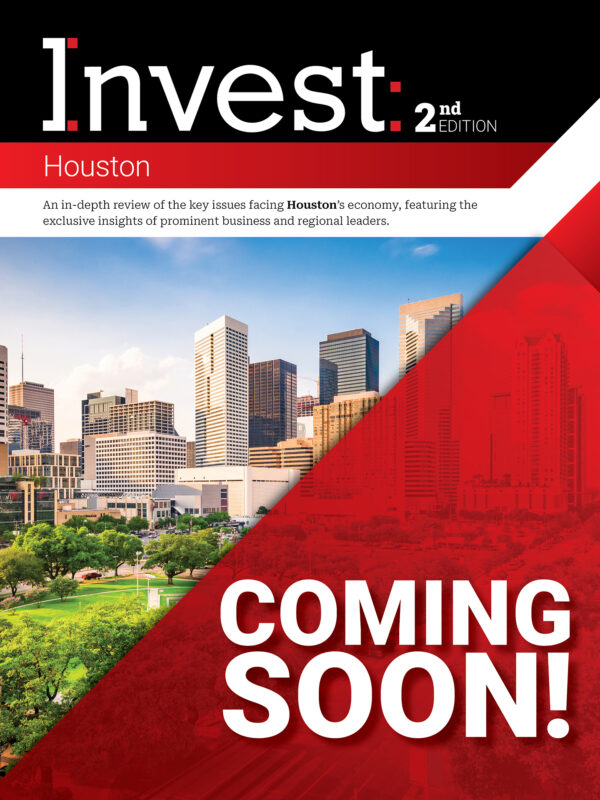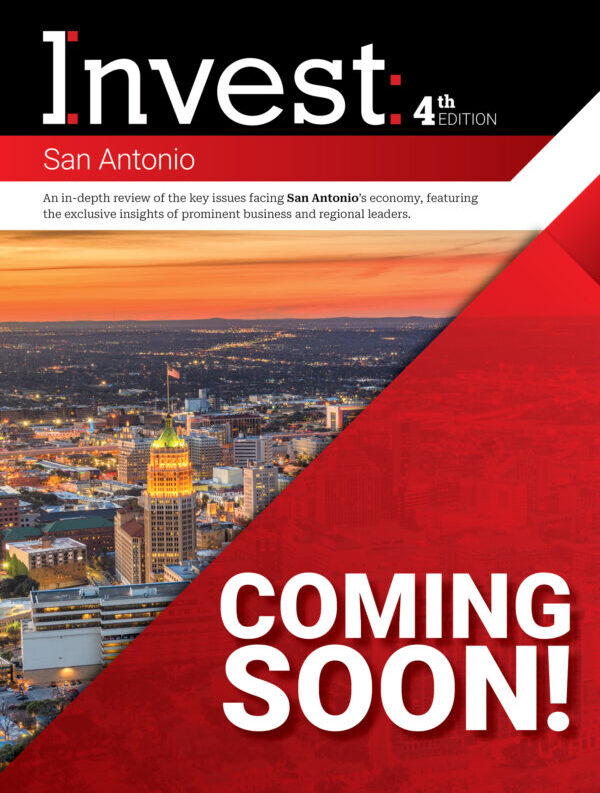Spotlight On: Ben Kinnaman, CEO & President, Greensea IQ
 December 2023 — In an interview with Invest:, Ben Kinnaman, CEO and president of Greensea IQ, discussed the company’s substantial growth of 53% in the past year and expanding its workforce by nearly 45%. Kinnaman delved into the company’s core mission of intelligent ocean solutions, leveraging AI and autonomy and shared his insights into various domains, including renewable energy and ocean exploration.
December 2023 — In an interview with Invest:, Ben Kinnaman, CEO and president of Greensea IQ, discussed the company’s substantial growth of 53% in the past year and expanding its workforce by nearly 45%. Kinnaman delved into the company’s core mission of intelligent ocean solutions, leveraging AI and autonomy and shared his insights into various domains, including renewable energy and ocean exploration.
What have been some key achievements for Greensea over the past year?
Over the past year, Greensea achieved remarkable growth at a rate of 53%, while our workforce expanded by nearly 45%, with a strong focus on the Plymouth, Massachusetts, area. Our real estate footprint surged from 8,000 to an impressive 25,000 square feet and we’ve invested significantly in a spacious production facility in Plymouth. Furthermore, our successful merger with two sister companies in May marked a pivotal milestone.
Our core mission revolves around intelligent ocean solutions, powered by AI and autonomy through our proprietary software framework, Open Sea. This technology empowers autonomous robots to gather data efficiently, enhancing human presence in the ocean. Our ultimate goal is to deliver solutions that protect both the ocean and humanity.
How do you continue to foster innovation in marine robotics?
Our focus lies within the enigmatic ocean domain, a realm largely unexplored and rife with challenges. The ocean’s unforgiving environment and demanding conditions pose formidable hurdles. However, within this domain, essential sectors beckon our involvement.
Ocean and maritime warfare, an age-old reality, underscores the need for our engagement. Among its nefarious aspects, mine deployment stands as a grave concern. These explosive instruments, utilized as offensive weapons, have propelled us to harness autonomous technologies and robots for safe, efficient threat detection and disposal.
Our endeavors extend to the realm of renewable energy, abundant within the ocean’s depths. Yet, its effective utilization demands innovative, cost-effective solutions for installation and maintenance. Robotics emerges as a pivotal ally in expanding our reach and efficacy in this arena.
Addressing unexploded ordnance — lingering remnants of conflict — represents another facet. Autonomous robots are our answer to detect and neutralize these hazards, liberating ocean sections from perilous zones and restoring their potential.
Scientific exploration is also on our radar. We collaborate with global scientific entities, empowering them with technology, software and infrastructure. Our framework enhances scalability, facilitating participation in progress achieved by diverse sectors, from defense to industry. This synergy fuels climate change understanding and scientific advancement.
Considering the large scope of services that Greensea provides, how do you decide in which direction to grow?
The past year witnessed a profound transformation as we reimagined Greensea’s vision and objectives. My journey as an entrepreneur began 17 years ago, driven by technical aspirations to bridge a technological gap. Remarkably, we thrived and achieved profitability, maintained consistent growth and generated employment.
Around six to eight months ago, a pivotal question arose: were we truly reaching our potential? While our growth, profits and job creation were substantial, I felt a deeper impact was within our reach. This led to a crucial shift in perspective, envisioning Greensea as a catalyst for more significant and positive change.
The question evolved to encompass the magnitude of our potential influence — financial growth, broader reach. Yet, a more profound realization emerged: the notion of leaving a better world for the next generation. This concept, encapsulated in improving upon what our parents provided, ignited our drive for transformative impact.
For me, the heart of our potential lies in enhancing the ocean’s state for future generations. The success I envision is leaving a healthier ocean for my children than I inherited. This realization has refocused our mission, aligning it with substantial positive change. Greensea’s journey is marked by pioneering technologies, notably autonomy and data. As we chart our course, I sought avenues for maximum impact, culminating in five domains ripe for transformation.
Firstly, we entered the domain of mine countermeasures, aligning with those who protect. Here, we transcend profits, embracing a noble pursuit of safeguarding defenders. Renewable energies form our second frontier. By disrupting outdated economic models with autonomous robots, we aspire to redefine ocean-based renewables, minimizing human intervention. Scientific research, especially related to climate change, stands as our third arena. Our capabilities promise to expedite essential research, deepening our grasp of this global challenge. Lastly, we focus on ship performance optimization. Through deploying small autonomous robots, we combat marine growth on ship hulls, yielding notable fuel savings and emission reduction.
How does the renewable energy economy differentiate itself from traditional energies?
The issue is inherently complex, particularly when delving into the realm of transitioning to ocean-based renewables. This shift ushers in an entirely new paradigm, demanding a reimagining of cultural and operational norms.
Ocean-based renewable installations and maintenance redefine offshore work approaches. Autonomous robots, eliminating the need for human presence, underscore this transformation. This shift, in my view, is the crux of the matter — a profound departure from conventional offshore practices.
This concept, I believe, will ignite a remarkable surge in technology and service sectors. As Northeastern offshore wind energy gains traction, the region is poised for a substantial influx in its technology economy and service industry. These sectors hold the potential to reshape the Northeast’s economic landscape fundamentally.
In what ways has Plymouth supported the growth and success of your business?
I established Greensea in Richmond, Vermont. A few years ago, as we embarked on our expansion journey, we strategically chose the Boston region as our destination. In particular, Plymouth caught my attention during a networking event. There were several compelling factors that drew me to Plymouth. First and foremost, its proximity to Boston. Boston stands as a hub of intellectual capital, resources and a skilled workforce, making it a valuable resource for us. I also maintain a residence in Boston, allowing me to easily commute between Plymouth and Boston on a daily basis.
Moreover, Plymouth’s location relative to the Cape and Woods Hole, along with its adjacency to prominent ocean technology companies within our industry, played a pivotal role in our decision.
Beyond business considerations, Plymouth offers an exceptional quality of life, making it an appealing locale for raising families. Our operations are housed in the Plymouth Cordage facility, a space that we not only found but also invested in, expanding it by an additional 25,000 square feet. This facility is uniquely positioned right by the water’s edge, granting us the privilege to test our robots and technologies in the immediate vicinity. It’s more than an office; it’s an innovation playground.
Plymouth’s advantageous location offers our employees an enhanced quality of life, minus the challenges and expenses associated with urban living. Simultaneously, it provides an environment conducive to fostering business growth and a strong corporate community.
For more information, please visit:













